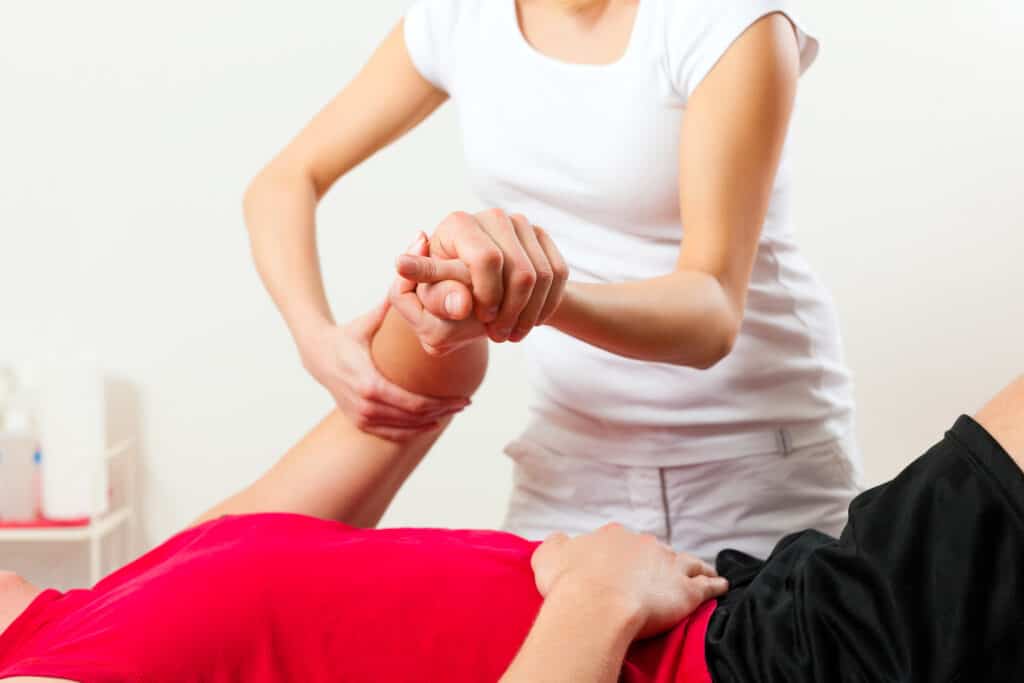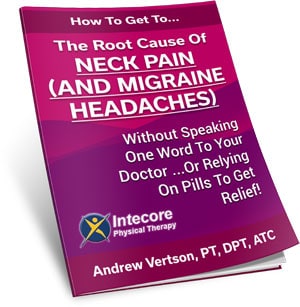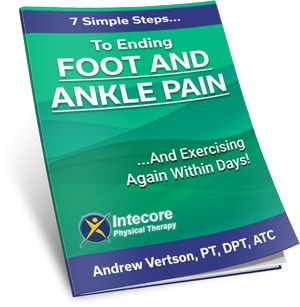
Injuries can happen to anyone at any time, and that’s why we decided on a guide to injury prevention. Whether you’re playing a social game of golf, a competitive sportsperson, or simply out for a walk on a Sunday afternoon, there can be moments of distraction or over-exertion that can result in physical damage.
That said, not all injuries are inevitable. Even if you’re a professional athlete, you can reduce your potential risk by implementing various habits and measures into your sporting or daily routine to protect yourself.
The most important thing to remember is that exercising and all forms of physical activity are essential for a healthy lifestyle and overall well-being. Playing sports can be great fun. However, it is important to take it easy and make sure that your body has what it needs to prevent injuries.
More Blogs From Intecore
I Think I’ve Pulled A Muscle In My Chest. What Should I Do?
Do The Shoes You Wear For Running Actually Matter?
Posterior Cruciate Ligament (PCL) Reconstruction: How To Recover
How Can I Reduce My Chance Of A Sports Injury?

Warm up before exercising or taking part in any physical activities:
Are you one of those who jump into exercising without any warm-up? If yes, then it’s time to change your routine.
A proper warm-up before physical exercise is essential for injury prevention, stiff muscles, and joint damage. Warm-up activities increase your heart rate and blood flow, making your muscles flexible.
It prepares your body for the upcoming activity, minimizing the risk of physical injury and maximizing your performance. So, before hitting the gym or engaging in any physical activity, take some time for a good warm-up session and injury prevention.
Take breaks between sets and during strenuous activities:
Sometimes, it can be tempting to power through a workout or activity without taking any breaks, but let’s face it, that’s not always the best approach. Taking breaks between sets or during particularly strenuous activities can be super beneficial.
Not only can it help you with injury prevention and avoid burnout, but it can also give your muscles time to recover and rebuild, which ultimately leads to better overall progress. So next time you’re tempted to push through, remember that a little rest goes a long way.
Make sure your equipment is properly adjusted to fit you correctly:
Whether an amateur or a pro, getting the right fit for your equipment is key to maximizing your performance. That’s why we’re here to remind you to take the time to adjust your gear to fit YOU properly.
Think of it like a tailor-made suit – it feels much better when made just for you, right? The same goes for your sports equipment. A proper fit helps injury prevention and gives you the edge. So, before your next activity, take a few extra minutes to make sure your training gear or equipment is dialed into your needs.
Stretch muscles gently after each session to reduce soreness:
Are you tired of feeling sore after every workout? Stretching your muscles gently after each session can really help. Not only does it help reduce soreness, but it can also improve your flexibility and goes a long way to injury prevention.
Plus, it doesn’t have to be a chore. While you cool down, a few simple, relaxing stretches can be an enjoyable way to cool your mind and body down after exertion. So, take a few extra minutes at the end of your game/workout to show your muscles some love with gentle stretching.
Wear protective gear while playing sports or doing any activity that requires it:
We all love to be active and enjoy the outdoors, whether playing soccer with friends or riding our bikes through the park. But it’s important to remember that some activities require protective gear to keep you safe.
Whether it’s a helmet when cycling or a mouthguard in contact sports, taking these precautions can mean the difference between an injury-free day and a trip to the hospital. Next time you’re gearing up for an activity, make sure you have the appropriate safety equipment.
Pay attention to your body’s warning signs. If something hurts, stop what you’re doing and rest:
It’s super important to pay attention to your body’s signals. If something hurts or feels off, it’s time to stop what you’re doing and take a break.
Ignoring these warning signals from your body can lead to more serious injuries, and you don’t want that. So, give your body the TLC it deserves and take a moment to rest when you need it.
If you follow the above tips, it will help in injury prevention, but in the unfortunate event that you do suffer an injury, physical therapy can help.
Can a Physical Therapist Help With Injury Prevention?

But is it as effective as people say?
Is physical therapy the best treatment for injuries?
Injuries can be a major setback in your life and stop you in your tracks – especially if you’re an athlete. But physical therapy can save the day and really help in the healing process of various types of injuries, including tennis elbow, rotator cuff tears, tendonitis, sprains, strains, and Achilles’ tendon problems.
We can also help with pre- and post-surgical rehab if your injury requires surgery. But what is physical therapy?
Physical therapy is a specialized field of healthcare that aims to improve the mobility, function, and quality of life of patients with injuries, chronic conditions, or physical disabilities. We focus on treating injuries through exercise, manual therapy, and other non-surgical means.
We work with you to create a customized treatment plan with specific exercises and activities to help you achieve your goals.
By strengthening your muscles, improving your balance and coordination, and reducing pain and inflammation, physical therapy can be a highly effective way to restore physical function after an injury and help you regain confidence and independence.
We treat muscle strains, sprained ankles, and broken bones, amongst many other common injuries.
We can also help with more chronic conditions such as arthritis and back pain. But the benefits of physical therapy go beyond just reducing pain and inflammation; it also helps to improve your overall mobility and strength and injury prevention.
How Does Physical Therapy Compare To Other Treatments?

Physical therapy addresses the physical symptoms of a condition. It gives you the knowledge and skills you need to manage your condition long-term and prevent future injuries. Through exercises, manual therapy, and education, you can expect an improved range of motion, strength, and sense of well-being.
Plus, physical therapy allows for a more personalized approach to treatment that aims to alleviate pain, restore mobility, and improve your physical function while also considering your unique needs and goals.
So, the benefits of physical therapy for treating injuries are undeniable, making it a top choice for you if you want to improve your health and quality of life.
The exercises we guide you through during the sessions can include everything from strength training and balance exercises to flexibility and endurance training – depending on the type of injury you have and how far along the rehab process you are.
By using these exercises, we can help you rebuild strength and flexibility in weakened or injured areas and improve your endurance.
Physical therapy can be crucial in recovering from injuries or preventing them altogether. However, making the most out of each session is important to ensure you’re getting the maximum benefit. One tip is communicating openly with your therapist about any discomfort or questions.
We can tailor your sessions to your needs and provide helpful advice for at-home exercises. Also, don’t hesitate to ask for clarification on any movements or techniques we use during the session.
Practicing proper form can make all the difference in your recovery and rehabilitation progress. But the most important factor is consistency in attending your sessions and completing the recommended exercises at home. That’s the fastest and most effective way to recover from an injury.
So, if you’re consistent with your physical therapy sessions, you will soon see amazing benefits from the sessions and enjoy all the activities again that have been impossible due to your injury or pain.
Plus, pairing physical therapy sessions with regular exercises and a healthy lifestyle can reduce your risk of developing new injuries in the future. Are you ready to get started? Click here to book a free initial consultation with one of our injury specialists.
- Sciatica or Piriformis Syndrome? 3 Ways to Tell the Difference (Self-Test Guide) - December 22, 2025
- What Is Gout? Why It Happens and What You Can Do About It - November 17, 2025
- 3 Essential Back-Saving Tips You MUST Know Before Any Workout - November 14, 2025












